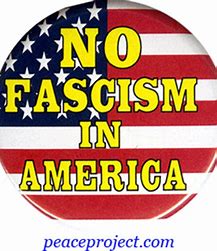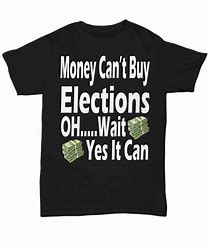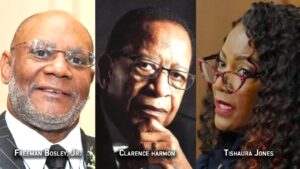Published by the St.Louis American - August 25, 2024
The decision to end the Jefferson Bank Commemorative Protest was an agonizing one for me. I respect the rationale shared by those closest to the initial protest to find more creative and relevant ways to memorialize the protest that still reverberates with those in the ongoing struggle for basic human rights for Black workers. The way the white power structure (as it was called in back in the day) linked arms to crush the protest rarely gets attention. It is a valuable case study for those who want to fight seriously for transformative change. You cannot underestimate the power of your oppressors.
In August 1963, the Congress of Racial Equality (CORE) presented a demand to Jefferson Bank and Trust Company. After the bank moved from a Black neighborhood it served to a white one, its Black bank tellers disappeared. Only a Black janitor and messenger remained.
A few months prior to this development, then- Alderman William Clay Sr. issued his damning “Anatomy of an Economic Murder” report. The report detailed the discriminatory hiring practices of major corporations in the region. It shattered the myth about fair labor practices locally and St. Louis being a paradise of racial harmony.
Reaction to the report was swift. Clay became a target of the mainstream media and business and civic leaders took turns muddying his reputation. This was an omen of things to come. The young leader would receive the longest sentence, spending 270 days in jail and was smacked with a $1,000 fine (equivalent to $10,000 today). Although he would go on to become our first African American congressman in 1968, an effort to oust Clay from his elected ward position was attempted but unsuccessful.
CORE’s just demand was to hire four employees to address the racist hiring practices in St. Louis banking institutions. When the bank’s response was that there were not “four Blacks in the city” fit for such jobs, CORE launched a protest that became the longest and most contentious in St. Louis civil rights history.
Hundreds of people descended on Jefferson Bank for months in support of the demands. They understood that the protest was symbolic of the systemic racism that denied Black folks a living wage and a pathway to a decent quality of life.
The bank filed a court injunction. Nineteen perceived leaders were rounded up in the middle of the night and thrown in jail, convicted, and thrown in jail again. Every tactic available to the white power structure was utilized, and everyone had their role.
Moderate civil rights organizations were co-opted with corporate donations. The white media was relentless in its barrage of attacks on the protest leaders and disinformation campaigns were waged to undermine the credibility of the protests. Statements of condemnation were issued from high-ranking officials including the mayor, the governor and president of the board of alders. Even the local bar association issued a statement citing the criminality of the defendants to defy court orders.
The goal of this coordinated and vicious campaign to maintain white supremacy took its toll on the lives of Jeff Bank defendants. Norman Seay was white-balled and ran out of St. Louis for a period. Percy Green, who had escaped the initial round-up of CORE leaders, was fired by McDonnell Douglas the following year for his acts of civil disobedience. Still, the defiant protest of CORE leadership and its legion of supporters had an enduring impact.
As the cases were making their journey from the streets to the courts, the handwriting was on the wall that the struggle for economic justice and political power was not going away. Many companies quietly changed their hiring practices to include Black workers at all levels, not just the menial, low-paying jobs.
We have not seen this level of personal and political repression since because most contemporary protests are rarely associated with specific demands or a targeted corporate titan. But know that when racial capitalism is threatened and the profits are on the line, the ability for stakeholders to quickly coalesce and suppress dissent remains..
While groups like CORE and ACTION are no longer in existence, their powerful legacies live on. They left an indomitable mark on this region and have passed the coveted torch to groups like the Organization for Black Struggle, Missouri Jobs with Justice, A. Phillip Randolph Institute, Coalition of Black Trade Unionists, Missouri Workers Center along with labor unions like SEIU and CWA.
For sixty years, a commemorative protest has been held at the site on Jefferson and Market Streets to amplify the voices of workers for livable wages, safe working conditions and the right to unionize. Jefferson Bank and Trust was sold in 2022. This year will mark the end of these commemorations but not the end to raising the concerns of workers and celebrating their victories.
Recent Posts

A united front against fascism is inclusive
Our united front must be broad and inclusive of those who understand the mission. There’s a quote that I’ve been thinking a lot about when I look at the U.S. Left’s response to the destruction by the trump-musk duo: “Don’t let perfect be the enemy of good”.

Buying Elections Cannot be the Norm
The convicted felon in the White House and his non-elected oligarch have opened wide the floodgates to influence elections by corporate sector dollars. We can see it happening at all levels of government. It is a neon warning sign that this country is treading dangerous waters on the way to Making America White Again. Tens of millions are flowing into the Wisconsin Supreme Court race.

One-term Black mayor a calculated plan
Even before Mayor Tishaura Jones was sworn in as the first African American female mayor, the murmurs of the curse started to swirl. Would she break the curse or fall victim to it? We will find out soon enough.
Get Updates
